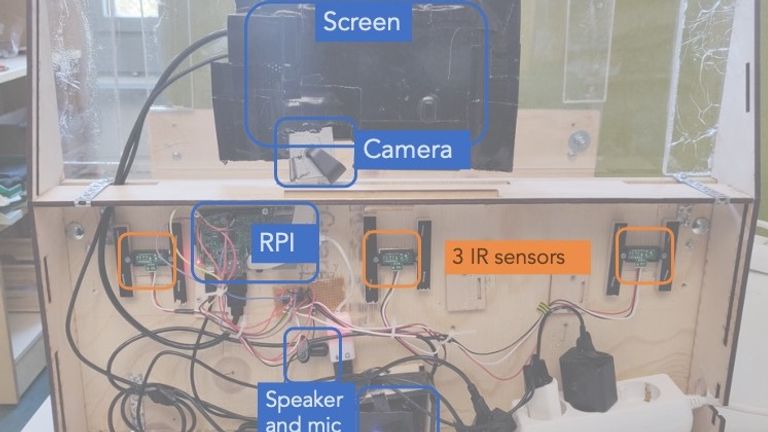[ad_1]
Researchers are studying the impact of technology which effectively offers zoo animals their own versions of Spotify and Netflix.
Scientists at the University of Glasgow have created a “monkey media player” that allows the animals to use interactive computer systems to play audio and video.
The touchscreen systems can be used by primates such as gorillas, chimps, and orangutans to entertain and stimulate themselves in similar ways to how their cognition might be stimulated in the wild.
For this research the team has been focusing on a group of three white-faced saki monkeys at Korkeasaari Zoo in Helsinki, Finland.
They placed a small computer in a wood and plastic tunnel inside the monkeys’ enclosure. The monkeys can trigger a video or sound by walking through infrared beams and could listen to or watch what was playing for as long as they chose to stay.
This device was placed in the enclosure for 32 days and the monkeys had the opportunity to watch rain sounds, music or traffic noises, videos of worms, underwater scenes or abstract shapes and colours.
The monkeys’ interactions were usually very short, losing only a few seconds, and over time the interactions dropped.
“The sakis triggered audio stimuli twice as much in total as visual stimuli, but over time their interactions shifted,” the researchers found.
“As the study progressed, their overall levels of interaction with both stimuli dropped, but their interactions with visual stimuli increased in comparison with the audio stimuli.”
The research was led by Dr Ilyena Hirskyj-Douglas, who researches animal-computer interaction at the University of Glasgow, along with colleague Vilma Kankaanpaa of Aalto University in Finland.
Dr Hirskyj-Douglas said: “We’ve been working with Korkeasaari Zoo for several years now to learn more about how white-faced sakis might benefit from computer systems designed specifically for them.
“Previously, we have explored how they interacted with video content and audio content, but this is the first time we’ve given the option to choose between the two.
“Our findings raise a number of questions which are worthy of further study to help us build effective interactive enrichment systems.
“Further study could help us determine whether the short interactions were simply part of their typical behaviour, or reflective of their level of interest in the system.
“Similarly, their varying levels of interaction over time could be reflective of how engaging they found the content, or simply that they were becoming habituated to the tunnel’s presence in their enclosure.
“While they chose audio more regularly than video, the results weren’t statistically significant enough for us to know for sure what they prefer,” she added.
[ad_2]


